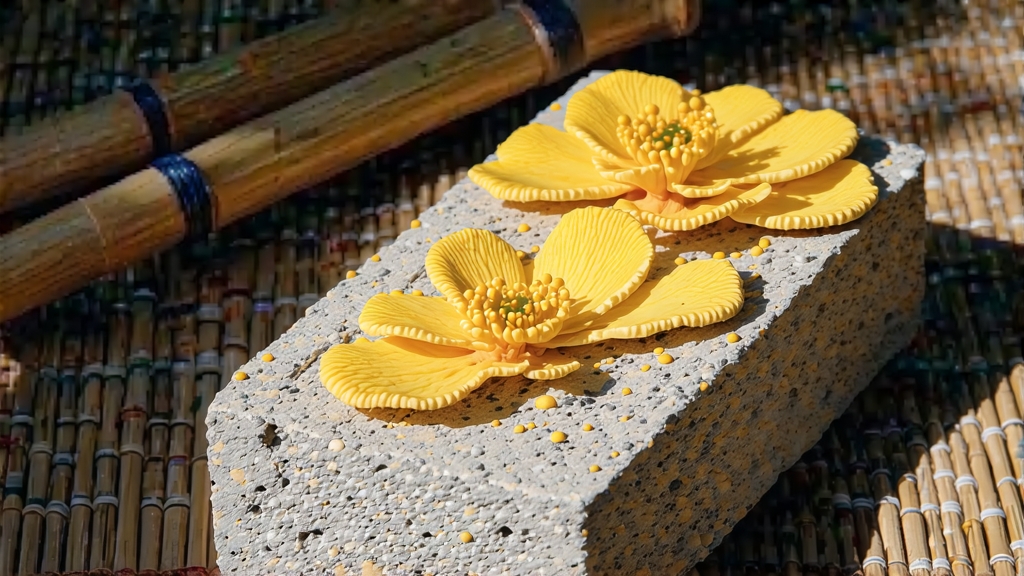
Tucked away in the mist-wrapped mountains of north-central Hunan province, a tea has been quietly fermenting for more than six centuries. Locals call it Fu Zhuan—literally “Fu brick” because the finished tea is molded into dense, chocolate-brown slabs weighing anywhere from 200 g to 2 kg. To the outside world it is simply Fu brick tea, yet within China it is revered as the only tea deliberately inoculated with a beneficial mold that blossoms into tiny golden specks. These “golden flowers” (Eurotium cristatum) are the living signature of a tea that straddles the boundary between beverage and medicine, between antiquity and cutting-edge microbiome science. This article invites the global tea traveler to discover how a humble caravan cargo became one of China’s most intriguing dark teas.
-
From Frontier Currency to National Treasure
During the Ming dynasty (1368-1644), the imperial court exchanged tea for Mongolian warhorses along the northwestern frontier. Compressed bricks traveled better than loose leaves, and the longer the journey, the more the tea mellowed. By the Jiajing era (1522-66), merchants in Hunan’s Anhua county noticed that bricks stored in humid riverine warehouses developed a fragrant, chestnut-sweet aroma. They began to replicate the aging process in purpose-built “Fu rooms,” giving birth to the first intentionally post-fermented tea. In 1595 the Ming Board of Rites designated Anhua dark tea as official “border tea,” and Fu bricks became a clandestine currency stretching from Xi’an to Lhasa. Caravans carrying yak-butter tea and Fu bricks forged the so-called “Ancient Tea Road,” a 5,000-km network often called the southern counterpart to the Silk Road. -
The Microbe that Changes Everything
Unlike shou Pu-erh, which relies on a cocktail of yeasts and bacteria, Fu brick tea is dominated by a single filamentous fungus, Eurotium cristatum. When the conditions read 26–28 °C and 70–85 % relative humidity, the fungus germinates into bright yellow cleistothecia visible to the naked eye. Chinese scientists have shown that these golden flowers secrete enzymes that oxidize catechins into theaflavins and thearubigins, while simultaneously reducing bitter caffeine and tannic acids. The result is a liquor that is smoother, sweeter, and lower in astringency than its green-tea predecessor. Recent metagenomic studies also reveal an abundance of short-chain fatty acids and exopolysaccharides that may act as prebiotics—one reason Fu tea is marketed in China as “the dark tea that loves your gut.” -
Crafting a Brick: Seven Stages from Leaf to Fungal Bloom
Step 1: Picking
Only the 3rd to 5th leaves are plucked in late April, when the spring rains have swollen the blades but the stems remain tender. These coarser leaves are rich in cellulose—the preferred carbon source for Eurotium.
Step 2: Fixing
A 5-minute tumble in a 280 °C drum halts oxidation by deactivating polyphenol oxidase. The leaf emerges jade-green, pliable, and ready for microbial invasion.
Step 3: Rolling
Light pressure for 20 minutes breaks cell walls without shredding the leaf, maximizing surface area for later microbial colonization.
Step 4: Piling
The semi-dry leaves are heaped 70 cm high and covered with wet cotton cloth. Inside the pile temperature climbs to 55 °C within 12 hours, triggering thermophilic bacteria that soften the leaf and generate malty aromatics. This “wet piling” lasts 8–10 hours—much shorter than the 45-day Wo Dui of shou Pu-erh—because the goal is not full fermentation but pre-conditioning.
Step 5: Firing
A fast 90 °C bake reduces moisture to 12 %, stabilizing the leaf for compression.
Step 6: Compression
Steam softens the leaf for 15 seconds before 20-ton hydraulic presses mold it into steel-lined wooden boxes. Each brick is perforated with five vertical air holes to ensure oxygen reaches the interior.
Step 7: Flowering
The bricks are stacked on bamboo racks inside a Fu room for 7–10 days. Mist nozzles maintain 75